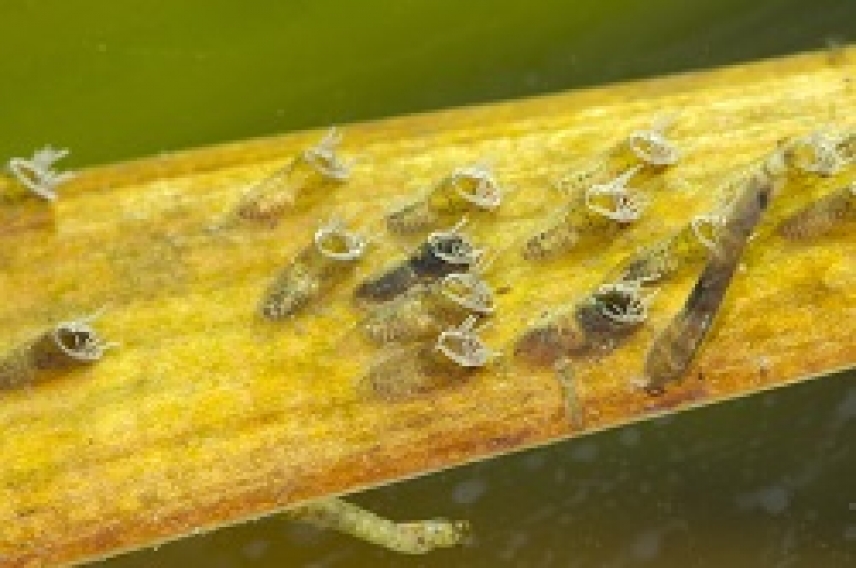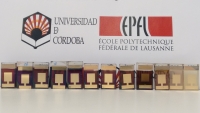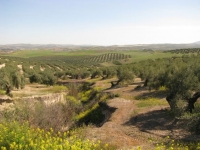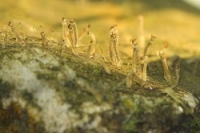La Facultad de Filosofía y Letras acoge un Congreso Internacional sobre el Sujeto Literario en la modernidad temprana
Escrito por UCC+iEl encuentro, que se celebrará del 24 al 26 de enero, se centra en el periodo comprendido entre mediados del siglo XV y las primeras décadas del XIX en el ámbito hispánico
La facultad de Filosofía y Letras acogerá del 24 al 26 de enero un congreso de talla internacional sobre el Sujeto Literario en la modernidad temprana. De esta forma, el encuentro se centrará en el periodo comprendido entre mediados del siglo XV y las primeras décadas del XIX en el ámbito hispánico, aunque también serán tratadas otras perspectivas de dimensión europea. Aunque el núcleo de interés será la literatura en un sentido amplio, también tendrán cabida otras aproximaciones en otras artes o manifestaciones culturales e históricas.
Un documental muestra las fases de desarrollo del proyecto de seguimiento y control de mosca negra en Córdoba
Escrito por UCC+iUn documental realizado por investigadores de la Universidad de Córdoba muestra las distintas fases de desarrollo del proyecto de seguimiento y control de la mosca negra en el municipio cordobés, un insecto hematófago de gran importancia médica, veterinaria y económica debido a su potencialidad como vector de algunas enfermedades infecciosas.
La mejora en la estabilidad de las perovskitas la convierte en células solares de tercera generación
Escrito por UCC+iUna investigación de la Universidad de Córdoba, publicada en Nature Energy, consigue estabilizar las células solares de perovskita mediante la incorporación de guanidinio.
La preocupación por el agotamiento de las energías tradicionales ha disparado la carrera por la búsqueda de energías alternativas. En el caso de las células solares, que convierten la luz del Sol en energía eléctrica, se producen avances a contrarreloj.
Estudian los efectos de la precipitación y la vegetación para frenar la desaparición del suelo mediterráneo
Escrito por UCC+iUna investigación del Departamento de Agronomía de la Universidad de Córdoba contempla variables de precipitación y cubierta vegetal para predecir la aparición de cárcavas.
La aparición de cárcavas es uno de los problemas de erosión del suelo más comunes en los ambientes mediterráneos. Las cárcavas son zanjas o incisiones producidas por el agua que escurre por la superficie del suelo. La formación de este tipo de zanjas afecta más a terrenos áridos, naturalmente más sensibles a los impactos negativos de la erosión, y se está convirtiendo en una de las principales preocupaciones de los agricultores de la región mediterránea.
Identifican once especies de mosca negra en la ciudad de Córdoba
Escrito por UCC+iEstos insectos, cuya presencia depende de aguas bien oxigenadas y rápidas, han sido estudiados a diferente escala en ríos, arroyos y canales de riego
Once especies de mosca negra, conocidas científicamente como simúlidos, han sido identificadas en Córdoba durante el año 2017. Se trata de un tipo de insecto hematófago de gran importancia médica, veterinaria y económica. Además de las molestias que causan, su potencialidad como vectores de algunas de las enfermedades más infecciosas obliga a mantener programas de detección temprana y de control para salvaguardar el bienestar y la salud pública.
Una inmersión en el pantano de Sierra Boyera descubre estructuras subacuáticas de piedra de un asentamiento ibérico
Escrito por UCC+iLos buzos del equipo del proyecto Roatán se han sumergido durante una hora en este espacio ubicado en Belmez, con el objetivo de documentar en 3D este yacimiento
Varios miembros del equipo de buceo que integran el proyecto Roatán de la Universidad de Córdoba han realizado hoy una inmersión en el pantano de Sierra Boyera en Belmez con el objetivo de documentar un asentamiento ibérico en 3D. Se trata del asentamiento de estas características poblado por Túrdulos, mejor conservado de todo el norte de la provincia de Córdoba.






